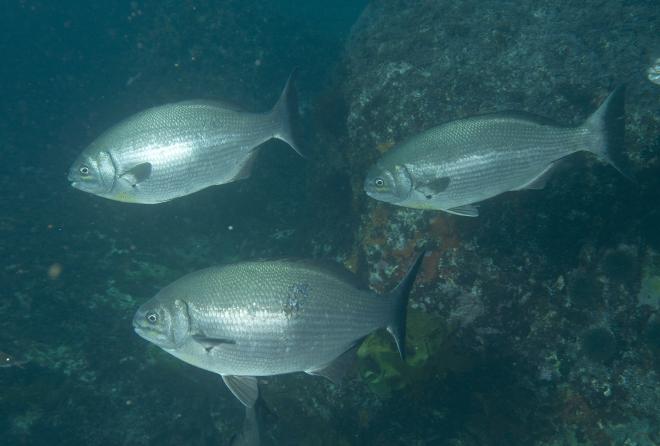Making waves in global food production technology
The Challenge:
Addressing global food production challenges in a novel and sustainable way.
NeSI’s Solution:
Working with more than 1 TB of sequence data, the researchers are relying on Mahuika, NeSI’s newest supercomputer, to run their genome assemblies and -omic data analyses.
The Impact:
Converting kelp to high nitrogen plant and animal feeds could create a number of new economic opportunities for New Zealand, and contribute to more sustainable and environmentally-friendly practices in food supply chain processes.
The world’s increasing demand for food generates a powerful economic imperative for innovation in food production technology.
Professor Kendall Clements (University of Auckland), Associate Professor Lindsey White (Auckland University of Technology), and their team are using NeSI computing resources to support investigations of a novel system that has the potential to create several new products for the global food supply chain.
What spawned their idea to tackle challenges in food production? The belly of a fish.
“Our research has revealed that symbiotic microbes in the hindgut of New Zealand seaweed-eating fishes convert seaweed and atmospheric nitrogen into compounds of nutritional value to fish,” says Kendall. “These hindgut microbes provide an important source of nutrition to the fish, and these novel organisms can be grown in culture.”
That’s where the potential lies.
Culturing the microbial communities to bioconvert abundant and sustainable seaweeds could effectively address four global problems:
- the economic and environmental costs of feeding capture fish to cultured fish
- the unsuitability of many terrestrial protein sources for aquaculture feeds due to the lack of critical nutrients and the presence of compounds inhibitory to digestion
- current roadblocks to using abundant seaweed biomass to produce aquaculture feeds
- the growing demand for sustainable agricultural fertiliser.
“This is a completely novel idea on an international level, as we have only just discovered and begun to understand the microbial and physiological processes in NZ fish underpinning it,” says Kendall.
The innovative nature of this work has already caught the attention of the Ministry of Business, Innovation & Employment (MBIE). Kendall and Lindsey’s project was one of 69 recipients in the 2018 round of the Endeavour Fund, New Zealand’s largest and highest value contestable science fund.
The Endeavour grant, worth more than $6 million over five years, will be led by Kendall and Lindsey, with Associate Investigators Dr Kim Handley (UoA), Prof. Esther Angert (Cornell University), and graduate students Samantha Stevenson, Alessandro Pisaniello and César Facimoto using NeSI computing resources to support the work. Other collaborators include Associate Investigators from the University of Canberra and Callaghan Innovation. The project also includes key partnerships with industry, including Waikaitu Ltd. and P&S Seaweed Harvesters in New Zealand, Enviroflight LLC and Kampachi Farms LLC in the US, and Ridley Aquafeeds in Australia.
This new programme builds on previous research by Kendall and Lindsey’s research group, funded through an MBIE Smart Ideas grant, which also relied on NeSI resources.
“NeSI was integral to our research that led to this current grant,” Kendall says. “The molecular work associated with this research generates huge amounts of data, and NeSI’s resources provide critical computing infrastructure.”
Now, with potential to generate well in excess of 1 TB of sequence data, this new programme will take Kendall and Lindsey’s computational needs to another level. They’re using Mahuika, NeSI’s newest supercomputer, to run their genome assemblies and -omic data analyses.
“Approaches such as assembling whole genomes from shotgun-sequenced metagenomes are highly computationally intensive, especially given the high diversity found in the hindgut communities of our fish,” says Kendall. “However, this is a very powerful tool for determining which community members are doing the heavy lifting in terms of kelp bioconversion.”
Over the next five years, these studies into converting kelp to high nitrogen plant and animal feeds could create a number of new economic opportunities for New Zealand. For example, fermentation end products are desirable as organic fertilisers. By developing the culture technology and methodology to maximize the production of these, it could decrease the need for more harmful fertilisers currently used. Also, these end products can act as a food source for black soldier fly larvae, which have growing global importance as feed components for aquaculture and poultry.
---------------------
Do you have an example of how NeSI platforms have supported your work? We’re always looking for projects to feature as a case study. Get in touch by emailing support@nesi.org.nz.







